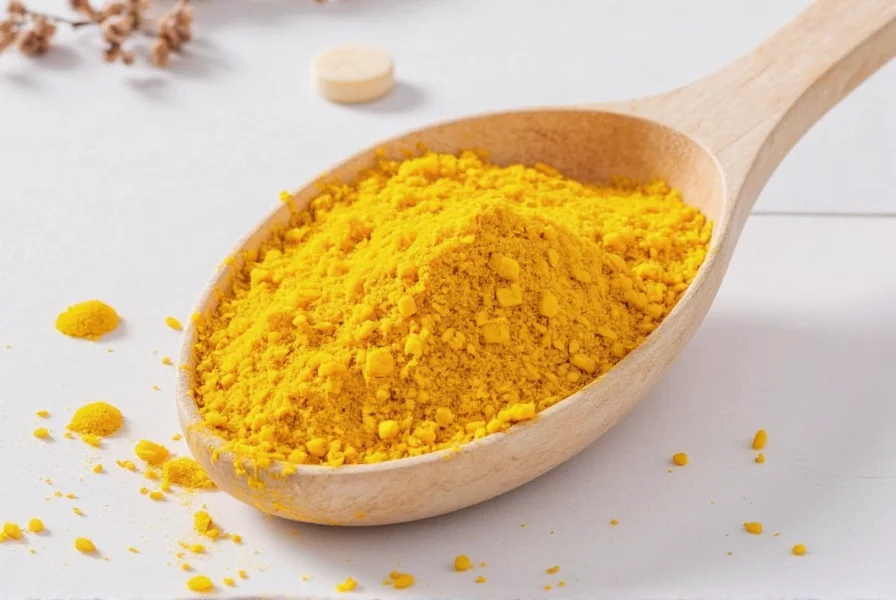As turmeric supplements grow increasingly popular for their anti-inflammatory benefits, understanding potential turmeric medication interactions becomes crucial for safe usage. Many people don't realize that this common kitchen spice, when consumed in concentrated supplement form, can significantly affect how certain medications work in the body. This comprehensive guide examines evidence-based interactions between turmeric and various pharmaceuticals, helping you make informed decisions about combining these substances.
Understanding Turmeric and Its Active Components
Turmeric contains curcuminoids, with curcumin being the most studied compound responsible for its yellow color and potential health benefits. While culinary use of turmeric in food poses minimal risk, concentrated turmeric supplements (typically containing 400-2,000 mg of curcumin daily) can reach levels that interact with medications. The primary mechanisms for these interactions include:
- Inhibition of CYP450 enzymes - Curcumin affects liver enzymes that metabolize many medications
- Natural anticoagulant properties - Turmeric may enhance blood-thinning medications
- Blood sugar effects - May amplify the effects of diabetes medications
- Stomach acid reduction - Could affect absorption of certain drugs

Major Medication Categories with Turmeric Interactions
Research indicates several medication categories where turmeric blood thinner interactions and other significant effects have been documented. Understanding these can help prevent adverse effects.
Blood Thinners and Anticoagulants
Turmeric's natural blood-thinning properties can dangerously amplify the effects of anticoagulant medications. This represents one of the most serious curcumin medication contraindications due to the risk of excessive bleeding.
Diabetes Medications
Curcumin may lower blood sugar levels, which can compound the effects of diabetes medications, potentially causing hypoglycemia (dangerously low blood sugar).
Antidepressants
There's growing evidence about does turmeric interact with antidepressants, particularly SSRIs and MAOIs, due to potential effects on serotonin levels.
| Medication Category | Specific Medications | Interaction Mechanism | Severity | Recommendation |
|---|---|---|---|---|
| Blood Thinners | Warfarin, Heparin, Clopidogrel, Aspirin | Enhanced anticoagulant effect; turmeric inhibits platelet aggregation | High | Avoid turmeric supplements; monitor INR closely if using culinary turmeric |
| Diabetes Medications | Metformin, Insulin, Sulfonylureas | Additional blood sugar lowering effect | Moderate to High | Monitor blood glucose closely; adjust medication as needed with physician |
| Antidepressants | Fluoxetine, Sertraline, MAOIs | Potential serotonin syndrome risk | Moderate | Use caution; monitor for serotonin syndrome symptoms |
| Chemotherapy Drugs | Doxorubicin, Paclitaxel | May interfere with drug metabolism | Variable | Consult oncologist before using turmeric supplements |
| Stomach Acid Reducers | Omeprazole, Ranitidine | Turmeric may reduce effectiveness of acid reducers | Low to Moderate | Space turmeric consumption several hours apart from medication |
Factors That Influence Turmeric Medication Interaction Risk
Not all common medications that interact with turmeric will affect every individual equally. Several factors determine your personal risk level:
- Dosage - Higher supplement doses (typically above 500mg curcumin) pose greater interaction risks than culinary use
- Formulation - Enhanced absorption formulas (like those with piperine) may increase interaction potential
- Individual metabolism - Genetic variations in liver enzymes affect how people process both medications and curcumin
- Duration of use - Long-term turmeric supplementation creates more opportunity for interactions than occasional use
- Existing health conditions - Certain conditions like liver disease can amplify interaction risks
Practical Guidance for Safe Turmeric Use
If you're taking medications and considering turmeric supplements, follow these evidence-based recommendations for safely taking turmeric with prescription drugs:
- Disclose all supplements to your healthcare provider during medication reviews
- Space out medication and turmeric consumption by at least 2-3 hours when possible
- Start with low doses if approved by your doctor (250-500mg curcumin daily)
- Avoid turmeric supplements 2 weeks before scheduled surgery due to bleeding risks
- Monitor for symptoms of interactions including unusual bruising, dizziness, or blood sugar fluctuations
- Choose standardized extracts with clear dosing information rather than unstandardized powders
When to Consult Your Healthcare Provider
Certain situations require immediate consultation with your healthcare provider regarding how turmeric affects drug metabolism:
- Before starting turmeric supplements if you take any prescription medications
- If you experience unusual side effects after combining turmeric with medications
- Prior to surgical procedures (stop supplements at least 2 weeks beforehand)
- If you have liver or kidney conditions that affect medication processing
- When beginning new medications while already taking turmeric supplements
Remember that "natural" doesn't automatically mean safe when combined with medications. The growing body of research on turmeric and diabetes medication interactions and other pharmaceutical combinations demonstrates why professional medical guidance is essential.










 浙公网安备
33010002000092号
浙公网安备
33010002000092号 浙B2-20120091-4
浙B2-20120091-4